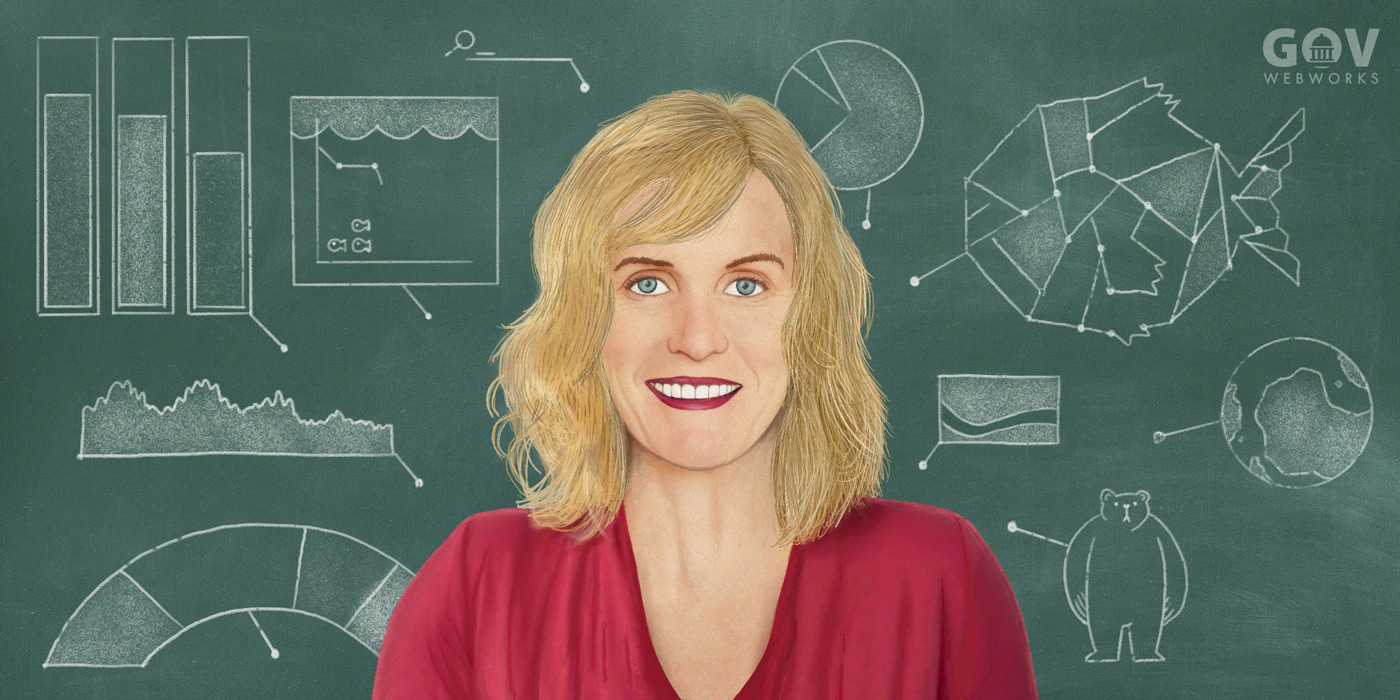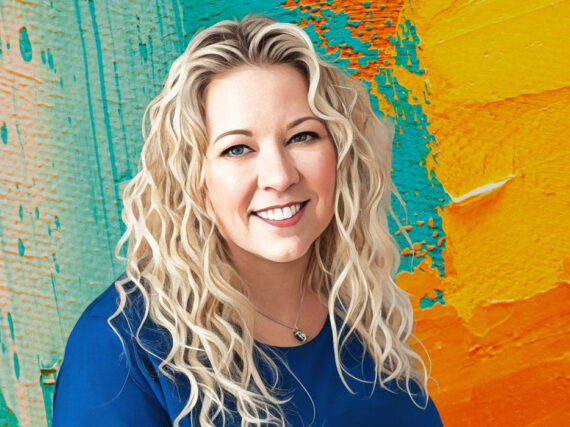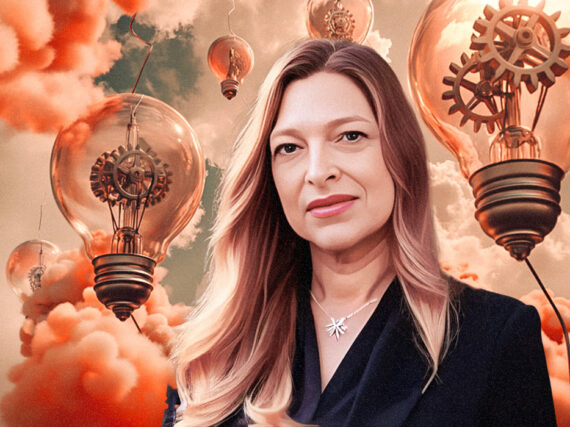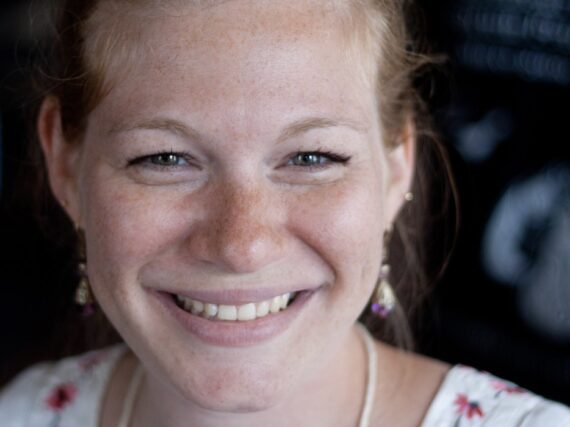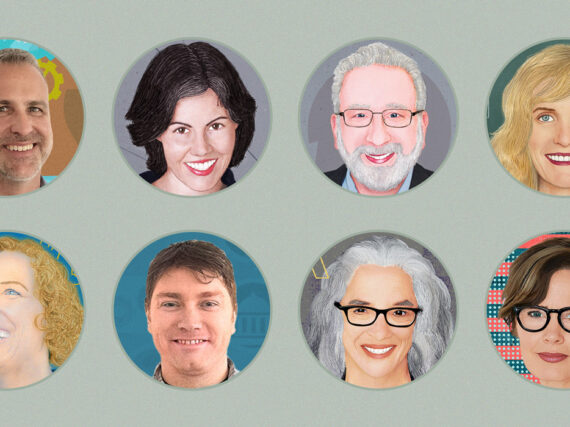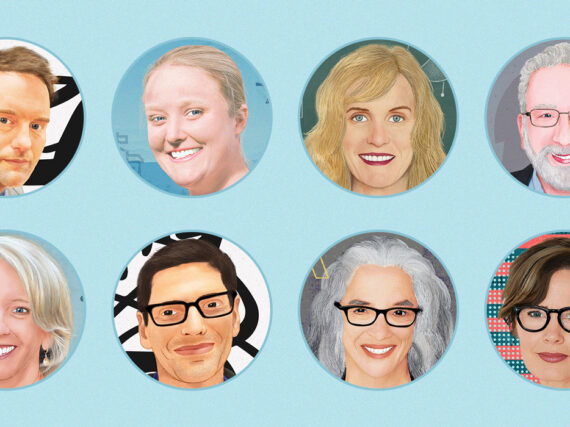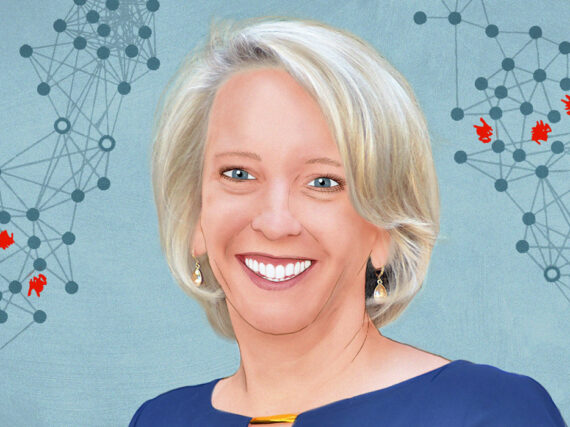When Kristen Cox found herself in an intense training program to learn the skills and mindset to become an effective and confident blind professional, her trainer said something she still uses as a daily mantra: “Kristen, you will get no new knowledge standing still. You’ve got to walk through your confusion, through your fear, into the unknown.”

“I found the problem of blindness is not blindness itself, but what we believe about it,” she says. “Are we going to give more power to the obstacles, or the goals?”
After reading The Goal by Eli Goldratt and Jeff Cox, she found the Theory of Constraints (TOC) principles similar to those used to overcome blindness. “Symbolically we all get stuck,” she says. “I learned that when I take on new challenges, it’s going to be uncomfortable for a bit, but it’s not the end of the world, I’ll figure it out.”
She brought that thinking to her work in government, first with the State of Utah’s Department of Workforce Services (DWS), and then with the Governor’s Office of Management and Budget (GOMB) where she and her team orchestrated a 35 percent improvement across Utah’s $22 billion budget. She also co-authored two books with Dr. Yishai Ashlag, Stop Decorating the Fish: Which Solutions to Ignore and Which Problems Really Matter and The World of Decorating the Fish.
Now widely known as the world’s leading authority on how to apply TOC for government and nonprofits, we asked Kristen how it can help agencies be more effective.
How do you define the Theory of Constraints (TOC)?
TOC is about identifying the most important problem to solve for your primary customer and solving that problem. First, you must determine, who is your primary customer? Government often has multiple stakeholders, but you only have one primary customer. Second, what is the most fundamental need for that customer, and what is blocking the organization from solving that problem? When I can figure out what problem to solve at each phase, for the customer, for the organization, and for operations, everything gets simple.
TOC teaches us that there’s one essential function, which is the constraint. The constraint governs the system. This is true for any system, there’s something that everything else needs to organize around. Whoever has the ball in a football game, the players move to protect that constraint.
With TOC, we make a shift to subordinate, or protect, the thing that the customer most needs. If that thing doesn’t happen well, the customer need won’t get met.
Can you give an example of a constraint?
We go to the doctor to have quality treatment and diagnosis, not to deal with health insurance forms. Unfortunately, 50 percent of the office’s time is spent on insurance paperwork. The doctor can see 40 people a day, but the up-front people can only schedule 20 because they are dealing with paperwork.
For a doctor, the constraint should be seeing patients, not dealing with health insurance forms. If the constraint is dealing with forms, that has to shift back to seeing patients to meet the customer need.
“We don’t want to waste a minute of the doctor’s time because it’s hard to replace and a lot of money goes into that resource.
How did your experience as a blind person lead to your work with TOC?
It’s easy when we’re administering programs to think that our improvement will somehow have an impact on the client down the road, but as we know from TOC it won’t unless it’s anchored in a clear definition of what the problem is for the customer.
I started to go blind in my teens and twenties to the point where I didn’t have usable vision, but when I went into the system for help, it didn’t help me, in fact, things went from bad to worse. For me, what I really needed was a shift in my deeply-embedded beliefs about blindness. Fortunately, I got involved with a great nonprofit and went through a training program (mentioned above), that began to shift my beliefs, and that eventually changed everything else.
What I appreciate about Theory of Constraints is that at its core it’s about challenging our assumptions. Our systems are all made up, and yet we live within the boundaries of these systems and seldom step back to question the system itself and the assumptions that are driving the behaviors. We often keep doing what we know so we get more of what we already have. TOC encourages us to step up and say, “I’m going to go after something uncomfortable and I’m not sure how to go about doing this because it’s not about doing it perfectly.” You will be messy, you will make mistakes, you will have screw ups along the way, but that’s ok, that’s the journey when we’re trying to get to a new destination.
It’s like New York City, it’s hard to see it when you’re in it, but when you’re looking down from a helicopter you can see the big picture. As the saying goes, I don’t know who discovered water, but it wasn’t a fish. TOC is about going up a level.
How can TOC help government?
When government hears about something like this, they think we’re government, it won’t work, but I’m like, yeah, we’re all special, but not unique. The core underlying problems are very similar. The basic idea of TOC is, I can’t fix everything, no one has enough time, energy, or resources to do that. So, if I can’t fix everything, where do I focus? That’s a hard question to answer because operations are invisible to us, they are hidden inside the black box of government. We measure lots of things like case load size, but we don’t understand what’s happening inside the black box very well.
Theory of Constraints gives us clarity: who is the customer? And focus: what’s the problem to solve for that customer? Then I can put all my resources on that problem. That’s the essence of TOC – clarity and focus.
I’m all about two-page strategic plans. If you can’t state the problem you’re having and the solution in a few sentences, you won’t know what you’re doing. Once you have that, if you’re not seeing improvement, you’re not solving the right problem.
How do the books relate to your work in government?
What we call the “seductive seven” (more tech, data, strategy, etc) in Stop Decorating the Fish are all about the illusion of progress, busy and bureaucratic solutions and cool new trendy stuff, but if something doesn’t move the needle in a huge way for the customer, it’s the wrong solution.
I was running the budget shop in Utah and people would come asking for money and I’d say, for what? If they couldn’t directly connect why a new data warehouse was going to solve a problem for a customer, I wasn’t interested in it. I’m interested in making a physical change that solves a significant problem for the customer.
I’m not anti tech. I use it, support it, and fund it, but tech is just a tool. Usually, you have a problem in your offerings and workflow and technology can just harden the wrong behaviors.
A lot of times in government, people want to add things. But what we’re saying is value is created when you remove a significant limitation in a way that wasn’t possible before.
How can TOC help a team that has more demand than it can handle?
There’s usually a resource, often highly paid, that is constraining and bottlenecking all the other resources.
For instance, a senior developer who has to fix problems for everyone is very often the constraint. So, we need to help ease that person’s work, what I call protecting the constraint. If that person can only do 4-5 projects a week, I’m not going to give him/her 10 because that’s going to create bad multitasking (a sign of too much inventory in your system). When teams start doing that, it can cause you to lose 25-75 percent of your capacity.
Can you give an example of how to protect the constraint?
Let’s say you find your constraint, and your constraint is Mary. You can see the work moving through and as soon as it hits Mary, it bottlenecks. We want to offload work from her and protect her time. The fridge can only hold so much food, you can buy more, but it can’t hold more. There’s an ideal amount of capacity a person can handle.
If there’s a lot of rework for the constraint, that means you are not using them appropriately. We want to make sure any work coming into Mary is full kitted, meaning it comes to her ready to be worked so she doesn’t have to go on a scavenger hunt, ask questions, or chase people down.
You know the chefs on the cooking shows who make it look so easy? Everything’s prepared for them, right? So, we don’t release anything to Mary until it’s ready.
How does TOC play out in health and human services?
If you assume the single mom with two kids wants a good life and doesn’t want to be poor, the question is, what’s blocking her from doing that? It’s not about training to get a good job, it’s something in her life that’s going on.
Like blindness, poverty is about beliefs. If we don’t surface those beliefs, no amount of money, strategy, or technology is going to fix things. The block is always anchored in the customer.
Think about intergenerational poverty…is the kid or the parent the customer? If you don’t know that, you can’t solve the problem and you can’t build operations around it. So, in this case, the kid is the customer and the parent is a strategic customer. Then I can create a solution for the kid. The next question is, what do I now need to do for the parent to help the solution for the kid to be successful?
There’s a list of big words used in government – transformation, innovation, coordination, collaboration. I call it the dictionary of disfunction. They don’t mean anything unless you identify the customer.
What’s your dream goal for government?
My wish would be to work myself out of business, for systems thinking to become bread and butter in how government operates. You can’t keep fixing government with another policy. If we don’t know where to focus or what problem to solve, we waste taxpayers money, we don’t get return for the customers, people are frustrated, and we don’t deliver.
How do we get all of these pieces to work together to achieve the broader goal? That’s what matters. If we use prowess and acumen around operations in government we can make infinite impact. It always goes back to who’s the primary customer, and what’s their challenge.
Be effective first, and efficient second. Do the right thing, and do the right thing well. Do that backwards and you’re just getting faster at speeding up stupid.
Learn more
- Kristen Cox Website
- Kristen Cox LinkedIn profile
- Kristen’s Stop Decorating the Fish podcast
- Stop Decorating the Fish: About the book by Kristen Cox and Yishai Ashlag
- Join the Fulcrum: Exclusive content and live streams from Kristen Cox
